Reviews
George Mihalka
Canada, 1981
Credits
Review by Megan Weireter
Posted on 02 October 2007
Source Paramount DVD
Categories 31 Days of Horror
I recently read a book of pop anthropology that introduced me to the term “ethnographic dazzle.” The term refers to one’s perception of a foreign culture as vastly different from one’s own based mainly on its most glaringly visible traits, and an accompanying obliviousness to the two cultures’ similarities, which might actually run much deeper than the differences. The differences are really only a veneer, but a veneer that dazzles observers and blinds them to cultural commonalities. And this made me think of My Bloody Valentine.1 When you first learn the premise of this film, you might think “Oh, a horror movie that takes place in a coal mine! What a terrific and original idea!” But in fact you’d be experiencing “cinematic dazzle” to get too hung up on originality. Yes, the film exploits the uniquely terrifying - and sexy! - opportunities a coal mine presents, but ultimately the coal mine is dazzle, and anyone who loves a textbook slasher film will feel right at home here.
I’ll go ahead and point out the obvious, which is that in the wake of Halloween, a bunch of slasher films that ripped off that film’s basic premise and mood quickly followed. Many of these films are now treated with derision, sometimes rightly so, but some on-the-cheap slashers are well worth your time. My Bloody Valentine is one such film, a love letter (a valentine!) to the conventions of the slasher genre. I don’t see why a film can’t be appreciated just because it revels in some familiar conventions; there’s an art to adhering to a strong formula gracefully and creatively that is often overlooked. And let me also point out that it’s a good thing for slasher fans that directors like George Mihalka were there to carry the torch as the few original watershed slashers became bloated series that gradually abandoned any pretense of competent filmmaking—I’ll watch My Bloody Valentine any day over Halloween V or, God help us, Friday the 13th Part 8.
So let’s check in with My Bloody Valentine and make sure it contains all that we’re looking for in a successful slasher film: a crew of oblivious and oversexed young people (including a practical joker), several fake scares, an impressive body count, imaginative death scenes, even more imaginative placement of corpses, an incompetent police force, and a killer dressed in black, scary, anonymity-inducing miner’s garb. My Bloody Valentine even throws in several bonus features, such as a wise old ornery man who helpfully fills us in on the backstory and warns the kids of their impending doom. There’s even an overwrought love triangle, and a sex-tinged opening scene that makes no sense! It’s all pure gold. (And if this sounds less like writing a screenplay and more like assembling a jigsaw puzzle, then you’re obviously not a born slasher fan.)
To fill in a few more details: our hero, T.J., made the mistake of trying to leave the sleepy mining town of Valentine Bluffs in search of greater things in Hollywood, and when he comes back home after completely blowing it, no one is ready to forgive him for daring to go. Least of all Sarah, his ex-girlfriend, who’s found a new man in Axel, T.J.’s former best friend. Like pretty much every man in town, T.J. and Axel work in the coal mines during the day, and drink copious quantities of Moosehead at night while the town girls fawn over them. The only exciting thing that ever happens in Valentine Bluffs is the annual Valentine’s Day dance, recently resurrected 20 years after a mining accident and subsequent mass murder forced the local tradition into hiatus. Now after 20 years, fear of deranged killer Harry Warden has dissipated, and the town’s youth are excited to throw the dance once again. That is, of course, until people start receiving heart-shaped candy boxes containing human hearts… and then start dying in gruesome ways.
Acting in the long cinematic tradition of covering up the truth, the local cops keep the first few deaths under wraps and cancel the Valentine’s Day dance with no real explanation to the town’s kids. So what will they do instead? Have a secret party at the mine, of course! After all, no place is more festive for a party than a coalmine. And, as our heroes will discover, there’s no better place to be chased by a killer, either.
My Bloody Valentine admirably takes the non-genre of coal-mine-based slasher to its logical and awesome extremes. The mine is dark, filled with strange echoes and unstable passages that could leave you buried in rock, and it’s easy to get lost inside. The victims often hear the murderous miner before they see him; one memorable scene has the killer slowly advancing upon them, smashing the electric lights along the tunnel wall as he goes, so that with each crash of glass the darkness gets a little closer. Little touches like this are what make a horror film really stand out.
A good slasher film needs a good killer, and this killer is actually sort of an artist. Though he favors the pickaxe as his weapon, he shows good ingenuity by occasionally, say, spearing two copulating lovers on one mining drill, or turning a dead body into a gigantic, grotesque fountain. There’s actually not too much gore in the film (the aforesaid fountain scene is kept mostly off-camera in what I suspect is a studio-driven edit) and what there is tends to be very intentionally hilarious (a human heart accidentally gets cooked along with the hot dogs, much to the amused disgust of the prissy blond who finds it). The filmmakers learned from films that came before them that a silent, expressionless killer is the scariest of all, and wisely went in that direction here, dressing the killer in full miner’s gear that’s so all-covering it could probably double as a scuba suit.
Many horror films touch on the false imperviousness of small towns or suburbs. These idyllic locations routinely hide, or allow in, great evil that will not only result in human death, but in the death of the dream of innocent, all-American living. For me, this theme always smacks of being too easy. So what’s interesting to me about Valentine Bluffs is that it isn’t a very nice small town at all. It’s obviously a poor town, full of men who do backbreaking, dangerous, miserable work in the mines and put as happy a face as they can on it every night at the bar. The Valentine’s Day dance is literally the only thing this town has going for it—it’s no wonder the kids throw a secret party of their own once it’s called off. And what’s eeriest is that no one ever seems to leave. By the end even T.J. seems to have learned his lesson about daring to dream bigger than the town. Valentine Bluffs, while not evil in and of itself, has an oppressive, gray feel and a sense of gritty realism (of all things) that challenges what we expect.
Is My Bloody Valentine an artistic achievement? Well, the cinematography is serviceable, and the acting is pretty much unremarkable, but when a movie is this much fun, who cares about so-called artistry? You already know if you like this kind of thing or not, and if you do, you’ll love this little workhorse of a movie. It may not be the most dazzling movie you ever see, but My Bloody Valentine is sure to nevertheless earn a place in your (thankfully not mutilated) heart.
^1^ I only wish this weren’t actually true, but it is. The book, by the way, is Watching the English by Kate Fox (Hodder & Stoughton, 2005) and is excellent. ↩
More 31 Days of Horror
-

Alien
1979 -
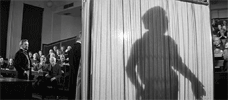
The Elephant Man
1980 -
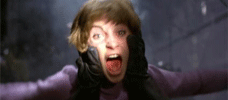
My Bloody Valentine
1981 -

Who Can Kill a Child?
1976 -

Cannibal Holocaust
1980 -

Let Sleeping Corpses Lie
1974 -

John Carpenter’s Vampires
1998 -

Jaws 2
1978 -

A Warning to the Curious
1972 -

Wolf
1994 -
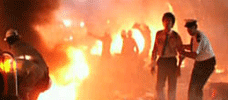
The Survivor
1981 -

Cannibal Ferox
1981 -
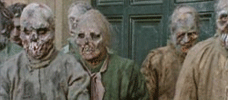
The Nights of Terror
1981 -
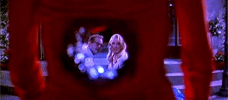
Death Becomes Her
1992 -

Alice, Sweet Alice
1976 -

Body Double
1984 -
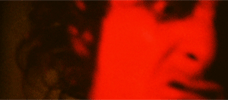
Invocation of My Demon Brother
1969 -
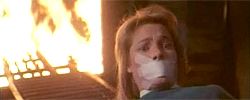
Phantasm II
1988 -

Emanuelle and the Last Cannibals
1977 -

The Wicker Man
1973 -

Maniac Cop
1988 -
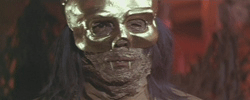
The Legend of the 7 Golden Vampires
1974 -
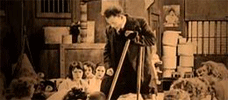
The Penalty
1920 -

Boxing Helena
1993 -

Chew on This
2005 -

Night of the Creeps
1986 -

Night of the Lepus
1972 -

Near Dark
1987 -

Army of Darkness
1992 -

The Brood
1979 -

The Lift
1983 -

Amsterdamned
1988 -
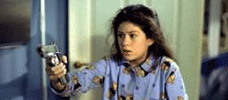
Silent Witness
1999 -

The Shaft
2001
We don’t do comments anymore, but you may contact us here or find us on Twitter or Facebook.



